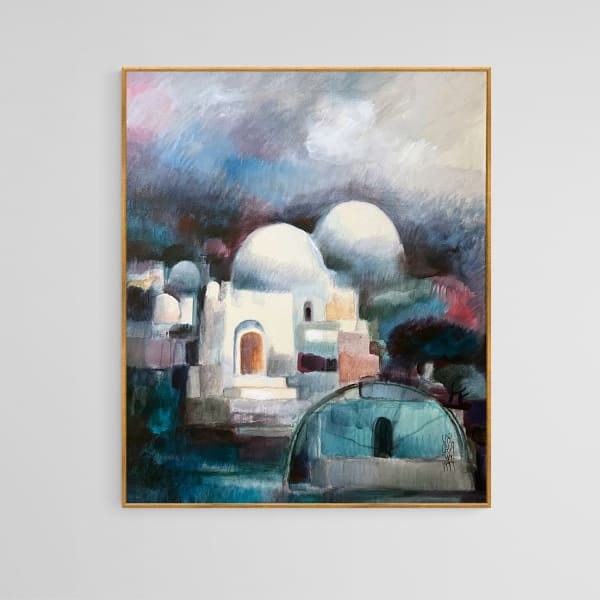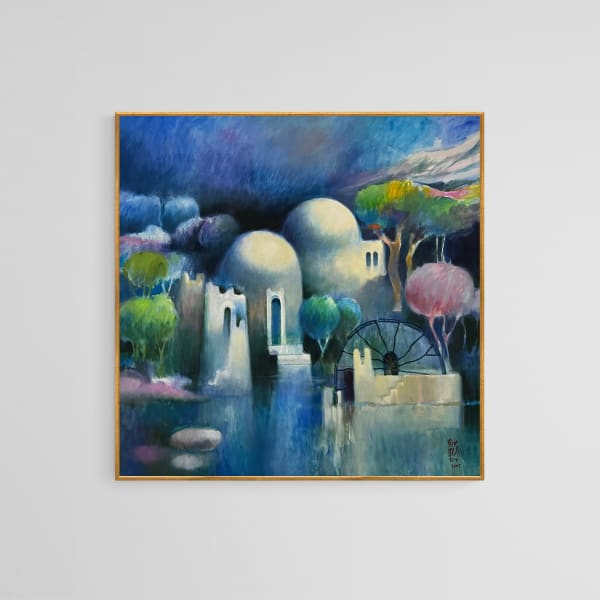Nouri Al Rawi IRAQI, 1925-2014
Overview
Nouri Al Rawi (1925 - 2014) is an incredibly influential artist regarded as one of the greatest exponents of modern-day Iraqi art. He graduated from the Institute of Fine Arts, Baghdad, in 1962 and pursued further studies at the Academy of Fine Arts in Rome, where he refined his technical skills and grew an extraordinarily individual style.
Nouri Al Rawi's artistic language has deep roots in his culture and traditions, yet its resonance surpasses national borders and encounters a universal audience. His art is mainly oil painting and sculpture, emphasizing abstraction and symbolism. Al Rawi's artwork balances abstraction and romanticism, primarily depicting scenes from his home country. However, he did paint urban scenes, and the artist focused predominantly on the village life in which he grew up, bringing an ethereal and mystical essence to his childhood memories, depicting buildings surrounded by bleak fields and sparse trees incorporating his trademark architectural forms and imbues his work with magical wonder.
He was famous for his paintings, which were filled with dense layers, brilliant hues, and complex textures that straddle the figurative and abstract. The artist weaves in texts, geometric designs, and references to Iraqi history and folklore to connect visual dialogues of the past with the present. All this intertextual play creates a palpable tension within artworks that urges the viewer to consider the cultural context and the deeply personal stories.
With exhibitions worldwide, his work on television, and extensive publications in books, magazines, and newspapers, Al Rawi tirelessly pursued his lifelong goal of educating the world, especially Iraq, on art and art history. His works tend to touch upon identity, memory, and displacement while engaging with the delicate interrelations of tradition and modernity.
Al Rawi's exploration of contemporary art offers challenges and invites audiences to reflect on the complexities of human existence.
Nouri Al Rawi passed away in Baghdad in 2014 at the age of 89, leaving behind a profound legacy in Iraq's – and the Arab world's – artistic history.
Artworks






